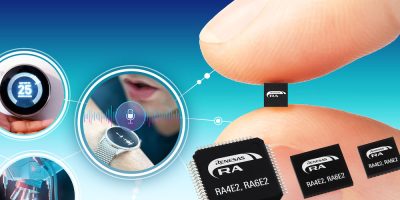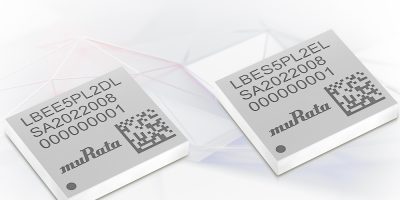NFC-based sensing controller, the NGC1081, has energy-harvesting capabilities and is the latest addition to Infineon Technologies portfolio of NFC tag-side controllers.
The NGC1081 IC is a single chip designed to enable the IoT industry to develop low-cost, miniaturised, smart edge computing/sensing devices which can be controlled and powered by mobile phones. Potential applications range from medical patches and disposable point-of-case testers to data loggers, smart thermostats, and sensor inlays.
The tag-side controller supports a dual power supply function, allowing it to operate in a passive mode (battery-free) based on energy harvesting, or in a battery-powered mode in which it operates as a self-contained sensing node via a 3.0 to 3.3V external power supply.
In passive mode, the entire sensing system, including the IC and its connected sensors, can draw power via energy harvesting from the NFC field of a mobile phone. The IC also has a naturally galvanically isolated sensing interface.
The NFC tag-side controller is based on a low-power Arm Cortex-M0 microcontroller and integrates an NFC front end which is compliant with the ISO14443 type-A standard. There is also a motor control driver that employs an H-bridge circuit with a current drive capability of up to 250mA. NGC1081 also features a sensing unit based on a 12-bit SAR ADC with four analogue inputs and a 10-bit DAC with one analogue output. The sensing unit also comprises an I2V converter and an integrated temperature sensor that provides an accuracy of ±0.3 degrees C over the temperature range of 0 to 45 degrees C and ±0.4 degrees C from -20 to 0 degrees C and 45 to 85 degrees C.
This integrated single-chip enables customers to implement smart sensing devices with miniaturised product design and reduced system bill of material costs, advised Infineon. The IC architecture and the hardware/software partitioning allow customers to create flexible software-defined functions.
Seamless connectivity to mobile phones allows developers to use a cloud-based business model, supported by a lean and scalable mailbox concept that ensures robust access management to maintain data integrity and security. Application-specific commands and messages from an open protocol interface can extend the protocol layer, added Infineon.
The NGC1081 NFC tag-side controller is available in a VQFN-32 package.







